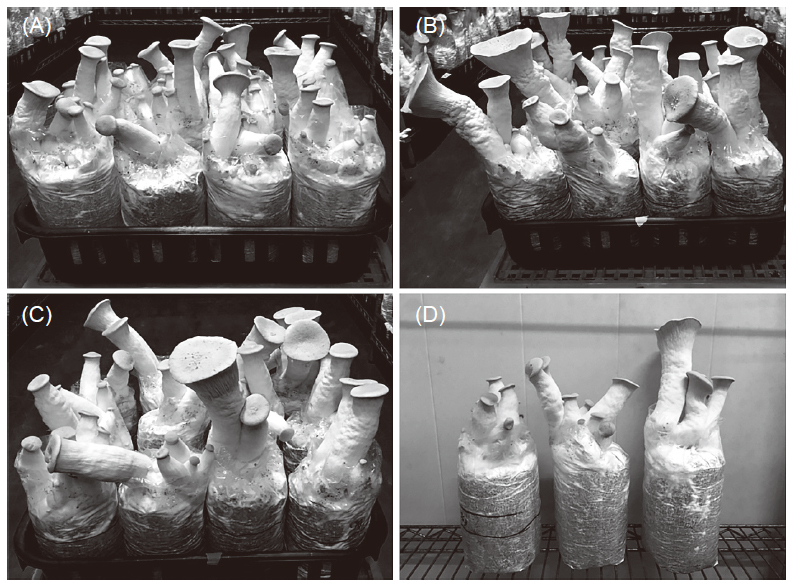All issues

Author:Chi-Yung Huang, Bee-Yu Wei, Hsiang-Cheng Hung, and Yun-Sheng Lu*
Abstract:
Energy shortage and over reliance on fossil fuels are important issues in Taiwan and the exploration of renewable energy is one way to solve the problem. Biogas energy is one type of the renewable energy, but the deployment of its uses is limited by the production of biogas residue. To solve this problem, biogas residue produced from fermentation of pig manure was mixed with bagasse in different ratios and put into mushroom sawdust bag with other ingredients for mushroom productions experiments in this study. The results showed that with part of rice bran replaced by the mixture of biogas residue and bagasse, the mycelium growth rate was increased in Pleurotus eryngii, Pleurotus sajor-caju, Hypsizygus marmoreus and Hypsizygus tessellatus in the sawdust plate assay. With rice bran replaced with different amounts of the mitxure of biogas residue and bagasse in cultivation of P. eryngii, results showed that both the mycelium growth rate and yield of P. eryngii were increased. In the analyses of the heavy metal contents in the fruiting body of P. eryngii, no Pb was detected. However, Cd, Cu and Zn were detected in the fruiting body in lower concentrations. As a result, this study indicates that clean biogas residue and bagasse are potential materials used for mushroom production and biogas residue is considered an useful resource rather than no-use waste.
Key words:Biogas residue, Bagasse, Pleurotus eryngii, Circular agriculture
Download:![]() PDF Links
PDF Links
- 1. Using Digital Soil Mapping to Predict Soil Organic Carbon Stocks in Zhuoshui River Basin
- 2. Taxonomic Review of the Genus Asiophrida Medvedev, 1999 in Taiwan (Insecta: Coleoptera: Chrysomelidae: Galerucinae: Alticini), with Notes on Biology
- 3. Development of a Technique for Forecasting (or Pre-Detection) Anthracnose Disease Incidences of Green Mature Bagging Mango Fruits
 Submit your manuscript
Submit your manuscript
 Guide for authors
Guide for authors